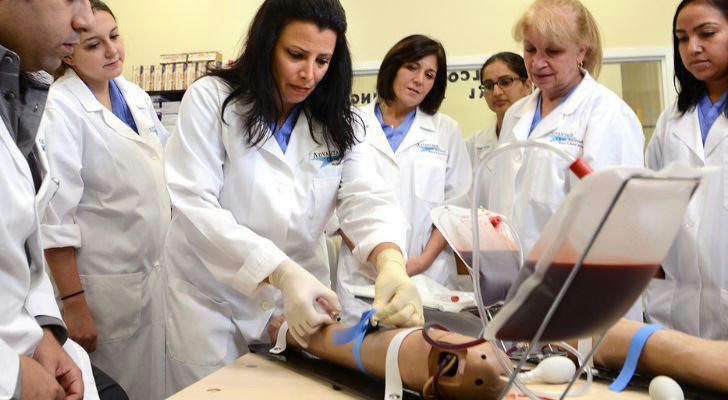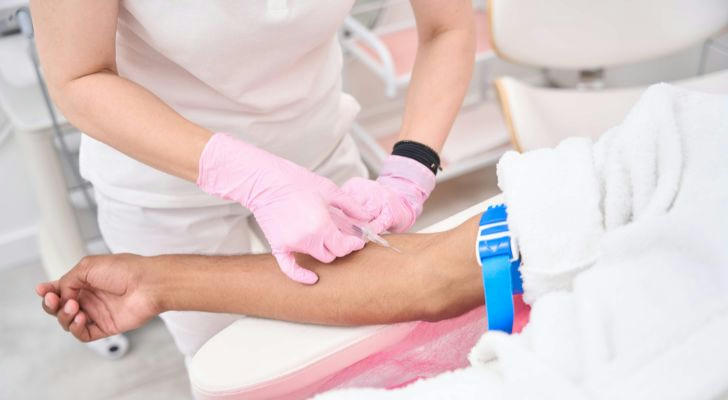What Is Phlebotomy? Understanding the Role of a Blood Draw Technician
Phlebotomy is a vital part of modern healthcare. It involves the practice of drawing blood from patients for various medical purposes, such as diagnostic testing, transfusions, research, or donation. The professionals who perform this task are known as phlebotomists or blood draw technicians.

Though often behind the scenes, phlebotomists play an essential role in helping doctors and nurses make informed decisions about a patient’s health. For individuals interested in a hands-on, fast-paced healthcare job that doesn’t require years of school, phlebotomy can be a rewarding and practical career choice.
This guide breaks down what phlebotomy is, what phlebotomists do, how to become one, and what it’s like to work in this field.
1. What Does a Phlebotomist Do?
The primary duty of a phlebotomist is to collect blood samples from patients safely and accurately. This process is known as venipuncture. Once collected, blood samples are labeled, stored, and sent to laboratories for testing.
In addition to drawing blood, phlebotomists may also:
Verify patient identity and medical orders
Explain procedures to patients and answer basic questions
Help patients feel at ease, especially those with a fear of needles
Prepare and clean equipment
Ensure proper labeling and handling of samples
Maintain accurate records
Follow strict protocols for infection control and biohazard safety
Depending on the healthcare setting, phlebotomists might also collect other samples, such as urine or swabs, and assist with basic lab tasks.
2. Where Do Phlebotomists Work?
Phlebotomists can be found in a wide variety of healthcare environments, including:
Hospitals
Medical laboratories
Physician offices
Outpatient clinics
Blood donation centers
Nursing homes
Mobile health units
Diagnostic testing companies
Some phlebotomists travel to patients’ homes or workplaces, especially if they work for mobile labs or home healthcare services.
3. What Skills Are Needed?
To succeed as a phlebotomist, individuals need a blend of technical and soft skills. These include:
Manual dexterity: A steady hand is essential for inserting needles safely and effectively
Attention to detail: Accurate labeling and proper handling prevent serious medical errors
Communication: Explaining procedures and calming nervous patients is part of daily work
Compassion: Many patients are anxious or unwell; kindness goes a long way
Stamina: Shifts often require standing and working with many patients in a day
Teamwork: Collaborating with nurses, lab technicians, and doctors is common
While experience helps, most of these skills are developed through training and practice.

4. How to Become a Phlebotomist
Phlebotomy is one of the more accessible career paths in healthcare. The steps typically include:
Step 1: Complete a Phlebotomy Training Program
Training programs are offered through community colleges, vocational schools, and some hospitals. These programs usually take between 4 to 12 weeks and cover:
Anatomy and physiology (especially the circulatory system)
Medical terminology
Blood collection procedures
Safety and infection control
Hands-on practice in venipuncture and capillary draws
Some programs also include externships in real healthcare settings.
Step 2: Earn Certification (if required or preferred)
While certification is not mandatory in every state, many employers prefer or require it. Several organizations offer nationally recognized credentials:
National Healthcareer Association (NHA) – Certified Phlebotomy Technician (CPT)
American Society for Clinical Pathology (ASCP) – Phlebotomy Technician (PBT)
American Medical Technologists (AMT) – Registered Phlebotomy Technician (RPT)
These certifications typically involve passing an exam that tests both knowledge and clinical skills.
Step 3: Apply for Jobs
Once certified, phlebotomists can begin applying for entry-level positions in a variety of healthcare settings. Some roles may offer on-the-job training or probationary periods for new hires.
5. What Is the Work Environment Like?
Working as a phlebotomist can be both challenging and rewarding. The pace is often fast, especially in busy hospitals or clinics. Each day may involve:
Drawing blood from dozens of patients
Working with children, elderly patients, or those with special medical needs
Handling potentially hazardous biological material
Documenting procedures accurately
Managing difficult situations, such as needle fear or uncooperative patients
Shifts may vary depending on the setting. Hospitals often require early morning, overnight, or weekend coverage, while clinics and labs may have more predictable hours.
6. Salary Expectations and Job Outlook
According to recent employment data:
The average salary for phlebotomists in the United States is around $41,000 to $45,000 per year
Entry-level workers may earn slightly less, while experienced phlebotomists can earn more
Wages vary based on location, employer type, and experience
Demand for phlebotomists is expected to grow steadily. As the population ages and diagnostic testing becomes more common, the need for trained professionals to collect samples will remain strong.

7. Opportunities for Growth
While phlebotomy is a specialized role, it can also be a stepping stone to other healthcare careers. Many phlebotomists go on to pursue roles such as:
Medical assistant
Laboratory technician
Licensed practical nurse (LPN)
Registered nurse (RN)
Medical laboratory scientist
Experience in phlebotomy builds a foundation in patient care, lab protocol, and clinical procedures—all of which are valuable for long-term healthcare careers.
8. Who Should Consider a Career in Phlebotomy?
Phlebotomy may be a good fit for individuals who:
Want to work in healthcare without years of schooling
Enjoy hands-on, practical tasks
Can remain calm and professional under pressure
Like working with people
Prefer structured, task-based roles
It can also appeal to those looking for flexible schedules or the ability to work in many different environments.
Conclusion
Phlebotomy is more than just drawing blood—it’s a career that supports the entire healthcare system. From hospitals to clinics to mobile labs, phlebotomists ensure that vital diagnostic samples are collected safely and accurately.
For those seeking a short-term training path into healthcare with solid job prospects and room for growth, becoming a blood draw technician can be a smart and meaningful choice. With attention to detail, a steady hand, and a compassionate approach, phlebotomists make a real difference in patients’ lives every day.
